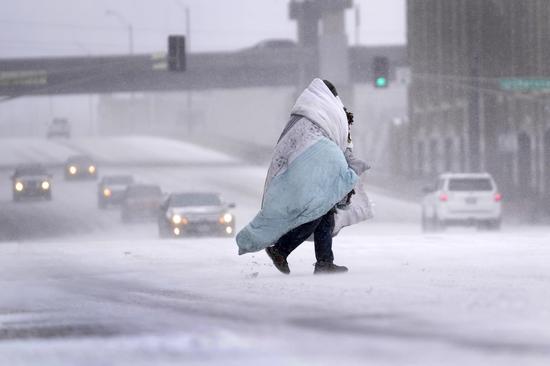COVID-19, drug overdose deaths lead to latest decline, CDC report shows
The average life expectancy in the United States shortened by more than seven months last year primarily due to an increase in deaths from COVID-19 and drug overdoses, the Centers for Disease Control and Prevention said on Thursday.
The latest data brings US life expectancy figures back to where they were in 1996, the agency said.
It found that US life expectancy fell for the second year in a row to 76.4 years last year, down from 77 in 2020, and nearly 2.5 years shorter than it was at the start of the COVID-19 pandemic.
While the drop in life expectancy in 2021 was not insignificant, it is smaller than the 1.8-year drop that occurred between 2019 and 2020.
Life expectancy is a measure of mortality. The CDC found that the death rate increased 5.3 percent, from 835.4 per 100,000 people to 879.7 per 100,000 in 2021.
Life expectancy fell by more than eight months for men in the US and by about seven months for women. But women are living, on average, until over 79 years old, which is about six years longer than men.
According to a CDC report published in April, there were approximately 460,000 deaths caused by COVID-19 in 2021. Nearly 1 in 8 deaths in 2021 were due to COVID-19, up from about 1 in 10 deaths in 2020. It was again the third leading cause of death.
Drug overdoses, which killed more than 106,000 people last year and accounted for more than one-third of all accidental deaths in the US, were another major factor in reducing life expectancy.
Many of these drug deaths were due to opioids, particularly synthetic opioids such as fentanyl, which increased 22 percent from 2020 to 2021.
Leading causes
Heart disease, the leading cause of death in the US, turned out to be even deadlier in 2021, along with other top killers like cancer, diabetes and kidney disease.
Eight of the top 10 causes of death increased statistically in 2021 compared to 2020, including unintentional injuries and stroke. Only Alzheimer's disease and chronic lower respiratory disease declined among the leading causes of death.
The latest decline came as other wealthy countries saw a rebound after the first year of the pandemic.
Steven Woolf, a professor of family medicine and population health at Virginia Commonwealth University, who was not involved in the study, blamed a variety of factors, including low COVID-19 vaccination rates and the general poor health of people in the US.
"The fact that the US in 2020 and 2021 did so much worse than other countries is a warning sign that this health disadvantage that America has had for many years is really getting pretty bad," Woolf told USA Today.
The CDC report showed that overall death rates increased for all age groups, except for infants younger than 1. But the largest increase was among those aged between 35 and 44, a group that was most affected by drug overdose deaths.
Deaths by suicide and from liver disease, or cirrhosis, caused by alcohol also increased, shortening the average life span in the US.
"The majority of those deaths are to younger people, and deaths to younger people affect the overall life expectancy more than deaths to the elderly," CDC statistician Kenneth Kochanek told National Public Radio.
The CDC also found that death rates decreased for certain racial and ethnic groups last year, especially Hispanic and black men. Death rates rose for nearly all other groups, but most notably for white men and women and American Indian or Alaska Native women, with no significant difference in death rates between Asian men and women.


















































 京公网安备 11010202009201号
京公网安备 11010202009201号